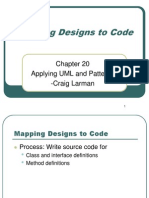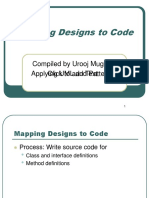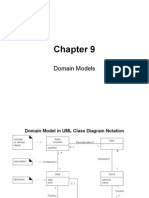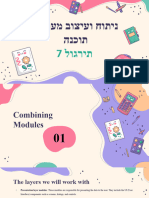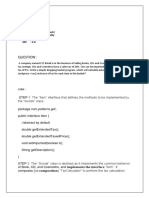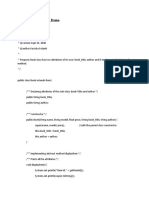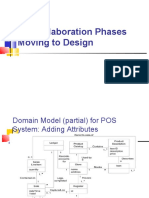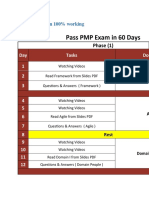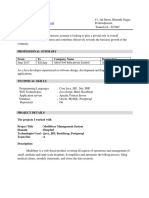0% found this document useful (0 votes)
99 views27 pagesMaping Design To Code
1) The document describes how to map a design represented using interaction diagrams and domain class diagrams to code. This involves creating class definitions, method definitions, and using collections to represent relationships between classes.
2) Key classes like Payment, ProductDescription, and ProductCatalog can be implemented first as they have few dependencies. Then classes like SalesLineItem and Sale can be implemented as they depend on the prior classes.
3) Collections like List are used to represent one-to-many relationships between classes like the line items in a sale.
Uploaded by
Bhupendra BhatCopyright
© © All Rights Reserved
We take content rights seriously. If you suspect this is your content, claim it here.
Available Formats
Download as PPTX, PDF, TXT or read online on Scribd
0% found this document useful (0 votes)
99 views27 pagesMaping Design To Code
1) The document describes how to map a design represented using interaction diagrams and domain class diagrams to code. This involves creating class definitions, method definitions, and using collections to represent relationships between classes.
2) Key classes like Payment, ProductDescription, and ProductCatalog can be implemented first as they have few dependencies. Then classes like SalesLineItem and Sale can be implemented as they depend on the prior classes.
3) Collections like List are used to represent one-to-many relationships between classes like the line items in a sale.
Uploaded by
Bhupendra BhatCopyright
© © All Rights Reserved
We take content rights seriously. If you suspect this is your content, claim it here.
Available Formats
Download as PPTX, PDF, TXT or read online on Scribd
/ 27





